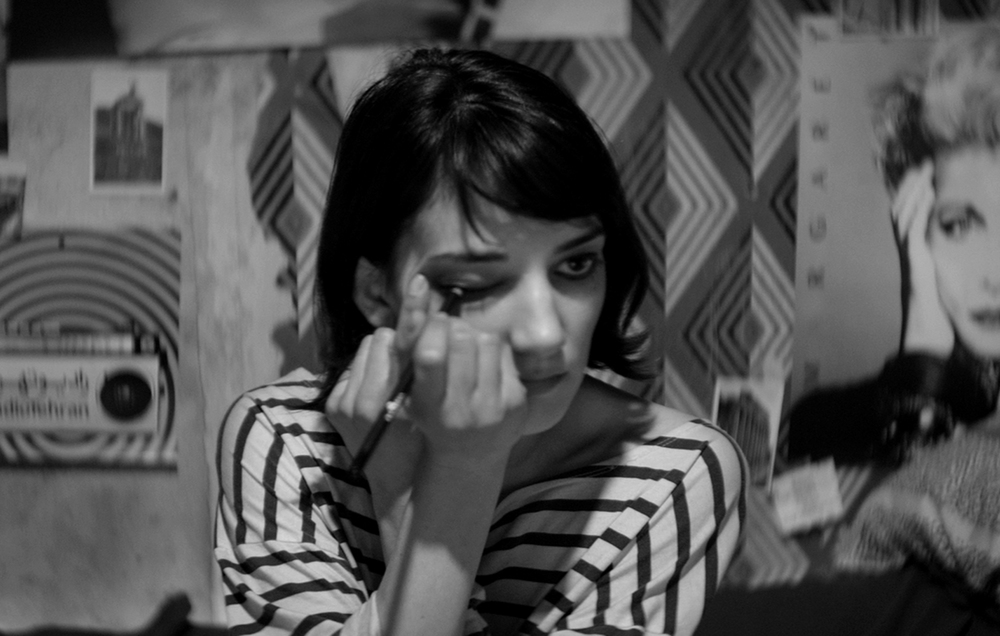Fellow film critic Victor Morton and myself discussed Iranian cinema on To Be Cont’d. I highly recommend you read the full exchange. Here is my second contribution:
Victor,
The Persian New Year fell on March 20 this year. Since my immediate family now lives in other cities, I celebrated on my own for the first time (my British fiancé and Canadian cat provided lovely company, but they were slightly clueless about all the hoopla). Usually my parents set up the traditional, elaborate table-spread (Sofreye Haft-Seen). This was my first time making my own and despite having to find everything just short of eye of newt, I somehow managed to find all the required symbolic items.
You may have heard of Nowruz through Iranian cinema. For example, Jafar Panahi’s The White Balloon takes place on New Year’s Eve. The film follows seven-year-old Razieh as she tries to buy goldfish with her brother’s help (goldfish or animal statues are a staple in Haft-Seen tables). The holiday also appears in Asghar Farhadi’s 2006 feature Chaharshanbe Suri (Fireworks Wednesday), titled after the main celebration leading up to Nowruz. The film uses the festivities as a backdrop for its plot about a family on the verge of its own emotional fireworks.
Nowruz always reminds me to watch more Iranian cinema, which in turn makes me question and re-question this multitudinous concept we call national cinema. I feel like I could answer your questions with five completely different ideas and still stand behind every one of them.
To answer your closing question, Victor, I wouldn’t be surprised if the future of Iranian cinema lay at home in Iran, where newer filmmakers (beyond Farhadi) will start making waves, with perhaps even some of the masters returning home. You hit the nail on the head when mentioning the moderate leanings of President Hassan Rouhani, because his election offers a source of optimism.
Rouhani’s inauguration eight months ago has resulted in some great changes; a variety of Iranian films are sure to play at festivals around the world quite soon. I would also disagree that Iran has experienced anything on the scale of Germany’s brain drain of the 1930s. In the past several years, the state of Iranian cinema certainly has suffered, and even if the filmmakers themselves are not in exile, like the Makhmalbafs, they are certainly doing everything possible to make films outside of the government’s control. If you recall last year, the scholar Hamid Dabashi wrote about the dearth of innovative Iranian cinema and blamed both the government and artists, making many problematic statements that I addressed in a blog response.
It’s perhaps no surprise that Rouhani’s rapid changes in the past several months have made people hopeful. For example, last autumn he reopened the House of Cinema, Iran’s largest filmmaking organization. This year’s Fajr Film Festival was able to screen Rakhshan Bani-Etemad’s Tales and Bahram Bahramian’s Parinaz, which had been banned. With the government supporting a large list of projects in the coming year–170 to be exact–it seems like the Iranian film industry can finally begin to breathe again.
At the same time, this much-needed collective optimism should always be kept guarded, considering that the political climate in Iran has never seemed stable enough to make speculations about the future of the country’s culture. The attempt is usually futile, so it’s better to focus on the here and now.
Regarding the masters, it’s uncertain what the cultural thaw in Iran will mean for filmmakers still fully or partly based in Iran. Those who have made their films abroad may think about shooting their next productions at home. On the other hand, making films abroad has proven fruitful for artists like Kiarostami and Farhadi. It has also opened up the conversation on Iranian identity, especially because these films don’t necessarily factor in Iranian identity openly. In that same blog post, I discussed the Iranian perspective inherent in Kiarostami’sLike Someone In Love, which is set in Japan but features a society similarly caught between collectivism and individualism. For Guernica, I also looked at the importance of representation in Farhadi’s The Past, a French co-production set in Paris but featuring an Iranian protagonist. These are important works to discuss regarding the Iranian diaspora, because they don’t necessarily come from diasporic filmmakers, and yet they add worthy ideas to the debate on identity.
WIth Rouhani’s changes, we should be more aware of new Iranian films by lesser-known directors (in addition to looking for new diasporic talent). In perusing the International Film Festival Rotterdam schedule this year, I noticed that the multiple Iranian selections included not one but two horror films: Shahram Mokri’s Fish and Cat and Ana Lily Amirpour’s A Girl Walks Home Alone at Night. I bring this up because of your thoughts on Mani Haghighi’s absurdist Modest Reception. I could relate to your curiosity and excitement because I had a similar reaction when I first read about Girl Walks. I realized that though our enthusiasm comes from a good place, maybe we’re partially exoticizing these films with our reactions.
This mutual reaction–not exclusive to us, but many other cinephiles exploring world cinema–occurs because a genre exercise from a foreign cinema seems novel to our Western eyes. Many national cinemas display a penchant for certain genres to the exclusion of others more familiar to us; Iran is no exception. Melodrama, comedy, arthouse and documentary are the four most popular genres in the country, though, in its history, Iranian cinema has also established other canons, reputable or not, including film-farsis–the melodrama’s precursor–and war films that resulted from the Iran-Iraq war.
Our exuberance is quite understandable: after the umpteenth Iranian film exploring social issues through child protagonists, it’s only natural that we would want something new and original. If it ties to something we’re already familiar with in the West (like the horror genre or absurdist theatre), that’s even better. Such works will offer a refreshing take from the artist’s perspective, one who didn’t grow up with the same cultural diet and who can approach conventions differently. It takes fresh eyes to point out the lushness of the grass on a well-worn path that we know so well, where we only ever paid attention to the dirt beneath our feet.
The idea that this kind of hybridized cinema exists is not the problem, but our attitudes toward it can be. We may assume that the most exciting way for a foreign filmmaker to reach an international audience is to use our cinematic grammar instead of experimenting with their own. This can also be true of how we talk about older films, where our minds naturally make connections to what we’ve already seen. That’s why I have to contest your argument that Iranian filmmakers were at a more advanced stage regarding magical realism than their Italian counterparts. It’s not fair to view film history in a linear fashion like that, because the post-war Italian directors had very different influences compared to the pre-revolutionary Iranian directors.
For example, the Italian directors looked highly to Jean Renoir’s poetic realism. Iranian filmmakers, however, were heavily influenced by their country’s burgeoning post-modern literature movement. Some, like Dariush Mehrjui, found inspiration in The Bicycle Thieves, but many more didn’t have the same education or access to foreign cinema (or if they did, access was surely spotty). These artists drew from a completely different palette of cultural references–Iranian ones. Making these connections is useful to the curious reader and I think they’re fruitful in pointing out the cultural contrasts, but we mustn’t prescribe these comparisons too literally, ignoring the possibility that these directors have more niche reference points.
The only way to learn about these differences is to read about them. I couldn’t truly appreciate the symbolic theatrical performances in Bahram Beyzaie’s Bashu, The Little Stranger until I read about Beyzaie’s deeply theoretical theatrical background and his close connection to traditional Iranian theatre. It’s pertinent–necessary, even–for cinephiles learning about world cinema to go beyond the work of Western critics. For example, In his book on Kiarostami, Jonathan Rosenbaum assumes that the filmmaker has seen Jacques Tati’s films instead of having native influence–this despite Kiarostami never having formally studied filmmaking. You don’t need to read dense theoretical texts either; there are plenty of world cinema readers and compendiums available at libraries and on Amazon that offer the necessary context.
Naturally, directors looking for an international audience will make sure their films are not only pertinent within their culture, but even so their films will contain a vast array of cultural references we may not catch. Farhadi is a great example of a brilliant filmmaker with a very versatile, universal screenwriting style that’s nonetheless uniquely Iranian. You can call his work Hitchcockian, and I will agree with you. But I also saw inA Separation and The Past vestiges of older Iranian films–melodramas about upper-middle-class Tehrani life, like Beyzaie’s Shayad Vaghti Deegar (Maybe Another Time) and Mehrjui’s Leila, which, like you, I also quite enjoyed. Perhaps the premise of Leila–about an infertile couple and their decision for the husband to take on a second wife to children–was too strange for Western audiences. Maybe the takeaway message for our conversation is a gentle reminder for cinephiles to be ever-aware of their cultural blind-spots, to stay as open-minded as possible when seeking new films, and that thinking outside cinema is as important as watching it.
-Tina

